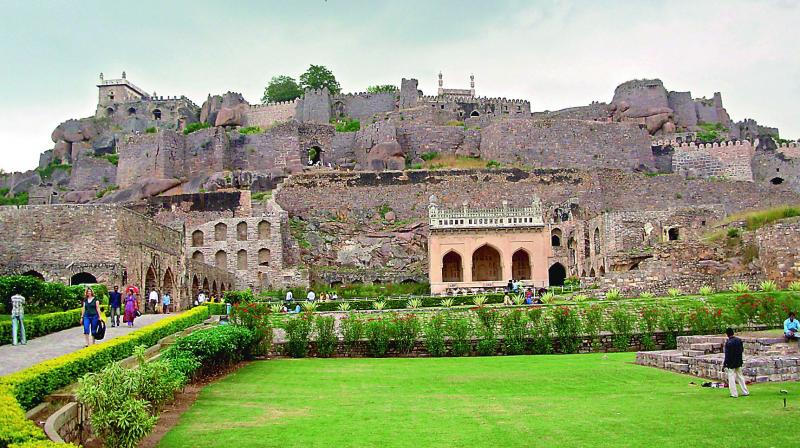Hyderabad: Golconda inspires name change in West

Hyderabad: On August 15, 2014, when Chief Minister K. Chandrasekhar Rao hoisted the National Flag at the Golconda Fort for the first time, he brought the spotlight back to the remains of one of the most well-known kingdoms in the world.
Golconda’s fame as a diamond producer had spread the world over; almost every famous diamond before the discovery of mines in Africa and other places came from this kingdom.
Kohinoor, Nizam, Dariya-e-Noor, Hope, Dresden Green, Archduke Joseph, Noor-ul-Ain, Nassak, Sancy, Shah, the Great Moghul, and many more diamonds made Golconda famous.
A kingdom so famous, that not one, but three places across the world were named after it by their residents. Not many people are aware that Golconda is a small town in Pope County, Illinois, United States, located along the Ohio River.
The town was originally named Sarahsville upon the organisation of Pope County in 1816, but changed its name to Golconda on January 24, 1817. The reason? The town was once mining diamonds, and now, minerals.
“Golconda, Illinois is not the only place to be inspired by Golconda, Deccan. There is another town in Humboldt County, Nevada, United States. This town of Golconda was founded in 1869. Discovery of copper, silver, gold, and lead brought entrepreneurs who opened mines and mills in the district,” said Haseeb Jafferi, a Heritage Buff who organises tours of Sufi Khwankhas under the banner of ‘Sufi Trails’.
The third place is a village located in the southern part of Trinidad. It was named after Golconda in the 19th Century. Presently, it is populated by mostly descendants of East Indians.
Most of the diamonds were cut and polished at Golconda and were found on its south-east at Kollur mine near Kollur, Guntur district, Paritala and Atkur in Krishna district in present day Andhra Pradesh during the Kakatiya reign. At that time, India had the only known diamond mines in the world.
Golconda was the market of the diamond trade, and gems sold here came from a number of mines. However, Europeans believed that the diamonds were found in the fortress-city itself. During the Renaissance and the early modern eras, the name Golconda acquired a legendary aura and became synonymous for vast wealth. “This was the reason that some residents of mining towns renamed them after Golconda,” said Mr Jafferi.
The mines brought riches to the Qutb Shahis who ruled Golconda up till 1687, then to the Nizams. The fort was built in the village Mankhyal, a name that still exists.
The Golconda fort was initially called Gul Kunda, meaning “cut like a flower” and also Golla Konda meaning “Shepherd’s Hill”. However, a myth took root that the place got its name because a shepherd used to graze his sheep there. “However, there is no record to prove this myth,” said historian Muhammad Safiullah. “The fort has a recorded history since 1184 AD; it was built by the Kakatiya rulers with mud. The fort later went to the Musunuri Nayakas, who ceded it to the Bahmanis in 1364.
The Bahmanis were in control of the fort till 1518 AD when Sultan Quli Qutbul-Mulk was appointed governor of Telangana in 1496 and Golconda was made the headquarters. The Bahmanis were headquartered at Bidar.
In 1518, after being the provisional governor for 22 years, Sultan Quli declared himself independent and founded the Qutb Shahi dynasty.
“Incidentally, this is the 500th year of the foundation of the Qutb Shahi Dynasty and the Deccan Heritage Trust will be organising an International Seminar by the year-end,” said Dr Safiullah.

